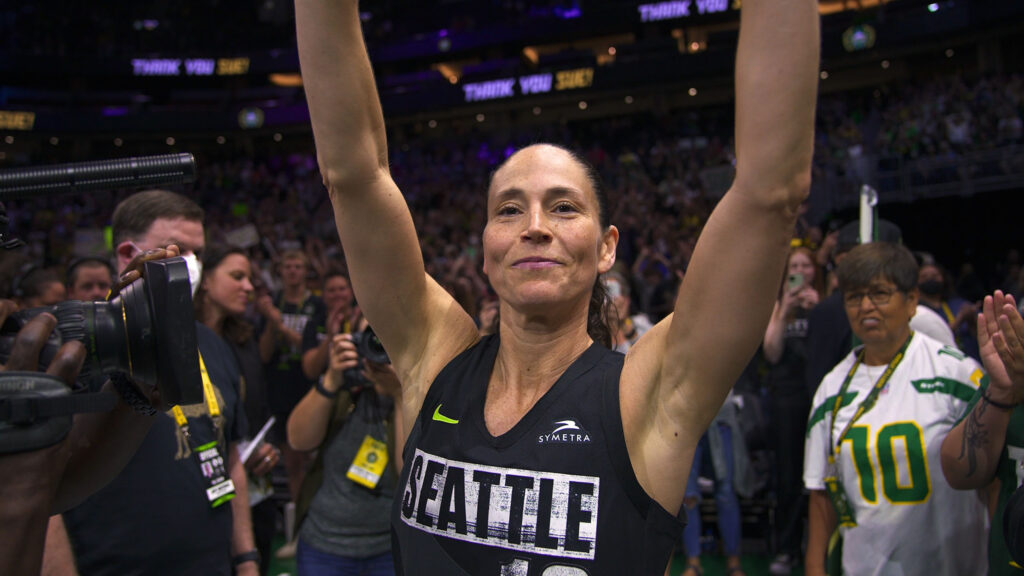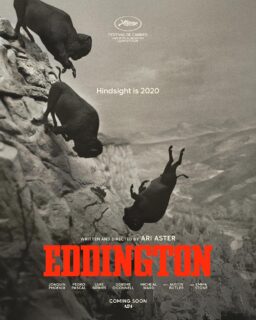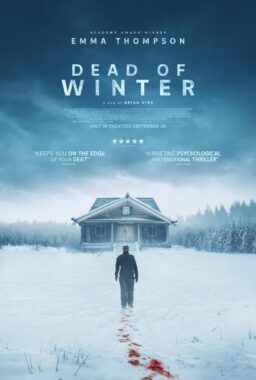Four years ago, the Sundance Film Festival was one of the last major events in the film world before the pandemic (you know the one). Although the festival soldiered on with virtual and then hybrid editions, this year was my first time back in Park City, trudging through snowbanks to get out of one movie theater and back in line at another. Some aspects of the festival have changed—certain regulars were no longer in attendance, some venues shifted a bit—but other things remained the same, namely the physical challenge of watching as many films as one’s time and body can manage.
Biographical documentaries, or bio-docs for short, are a staple at many festivals. Audiences seek them out to learn more about the people behind the headlines, and maybe they learn something extra about a hot button issue, a cultural movement, or the personal and political history that shaped this famous name. Such is the case of Sarah Dowland’s portrait of one of the WNBA’s most famous players, “Sue Bird: In the Clutch.” The film is a fairly straightforward sports documentary, tracing the trajectory of one of the oldest players in the WNBA as she contemplates retirement. From her active childhood in Long Island and Queens to getting drafted by the Seattle Storm and moving to a city she had never been to before her time in the WNBA, Bird is shown as the quintessential athlete: driven, unafraid, determined—all while making history in the process.
This documentary feels right at home among the ongoing wave of sports documentaries, like those in ESPN’s “30 for 30” series. It’s an emotional journey as well as a career retrospective, celebratory in spirit and a tribute to one of the most award-winning players in the league’s history. The film shows Bird’s many thrilling wins over the years, one amazing free throw and assist after the other, as well as her setbacks and painfully close defeats. The film also interviews former teammates and other players about her impact on the game, in addition to her family and fiancée, soccer superstar Megan Rapinoe, who chime in to give a holistic view of the kind of person she is when she’s not on the court.
With the WNBA’s involvement (most likely to license the sheer amount of footage to make a documentary this comprehensive over Bird’s 20+ years-long career), the film feels only mildly critical of the league’s poor pay that pushes players to take jobs abroad and putting them in danger, as was the recent case with Brittney Griner in Russia. At times, the talking heads style feels too stiff for a figure so full of action as Bird, but the film moves quickly, going on to critique the pay disparity between the NBA and WNBA, the sexualization of women athletes to make them more palatable to straight male fans, the pressure to hide Bird’s sexual orientation to avoid homophobia, and her support for activist causes beyond the game.

Maybe it’s because I remembered when “Dance with My Father” hit and everyone played it as their father-daughter song at weddings and quinces for years that I, and maybe many of you as well, took Luther Vandross’ music for granted for its ubiquity. But Dawn Porter’s “Luther: Never Too Much” hit both those nostalgic feelings and gave me a deeper appreciation for the man and his music. Porter unearths incredible footage from his earliest years, like when he sang as part of a group on “Sesame Street” or recorded numerous commercial jingles, long before his talent earned him the spotlight. She retraces the roots of his musical background and influences like Aretha Franklin and Diane Warwick, documenting his background vocal career working with David Bowie, Roberta Flack, and Bette Midler, all of which prepared him for the next stage of his own solo career. It’s a documentary about some of the best American music through the lens of an ambitious and prolific talent.
Porter’s film is rich in details and testimonies from Vandross’ colleagues, friends, and contemporaries. Although Vandross’ rise was marked by struggles—both professionally and personally with his weight and loneliness—she covers these topics sensitively and never lets them overshadow his music. There’s one hit after another, including the film’s nod to his catchy breakout, “Never Too Much,” as if reminding you yeah, you’ve heard his music, and you love it.
“Luther: Never Too Much” is an emotional journey through a catalog of unforgettable music and a thorough depiction of the grind it takes to make it in the industry. Even through the toughest parts of Vandross’ life, the film’s tone feels genuinely joyful because it continues to return to his music. Interviews reveal the thoughtful person he was offstage, the camaraderie he found with friends and collaborators, and the tireless dedication he spent on his craft, shaping the look and style of his extravagant shows and revising the many songs that kept fans dancing through the decades, whether that was an over-the-phone listening session or a wedding dance song.

Ian Bonhôte and Peter Ettedgui’s “Super/Man: The Christopher Reeve Story” was easily my big festival cry, something that moves you so deeply that the combination of sleep deprivation, altitude, and the movie’s subject makes it almost impossible not to get emotional. Anyone who remembers Reeve as Superman will likely learn something new about the actor, how funny he was on talk shows, laugh at the charming home movies of Reeve with his three kids or as he clowned around with his best friend and former roommate Robin Williams. These moments of reprieve puncture the more somber sides of his story, including an ever-disapproving father, divorces, and, later, the accident that changed his life forever.
The documentary begins with the year Reeve was injured in a horse-riding accident, which at first glance made me wince—why define a person’s life with such a devastating incident? But as the movie goes on, his survival after the accident draws parallels to his rising career as Superman, as both were physically daunting challenges and met with many setbacks. As he recovered, Reeve blossomed into a tireless advocate for spinal cord injury survivors, ushering a new stage of his career. Many of his speeches from that time had the audience in my screening muffling sniffles and sobs many times over.
To tie the two most public moments in Reeve’s life together, the filmmaking team used a CGI statue of the Man of Steel floating in space. When Reeve speaks of his pain after his injury, the statue becomes riddled with Krypton, the green crystals that weaken Superman. Now, it’s a bit cheesy, given the seriousness of the documentary, but it’s not as distracting from the story itself as I found the animation in “Frida.” The animation in “Super/Man” is more of a recurring visual motif, echoing the film’s structural argument that Reeve’s recovery and subsequent activism was nothing short of a heroic feat. The directors previously brought designer Alexander McQueen’s story to the screen and are no strangers to pulling together archival interviews, their subject’s works, their home movies and testimonials—this time from Reeve’s friends and colleagues like Susan Sarandon, Whoopi Goldberg, Jeff Daniels, and Glenn Close—in an attempt to portray the complicated person behind the public persona.












